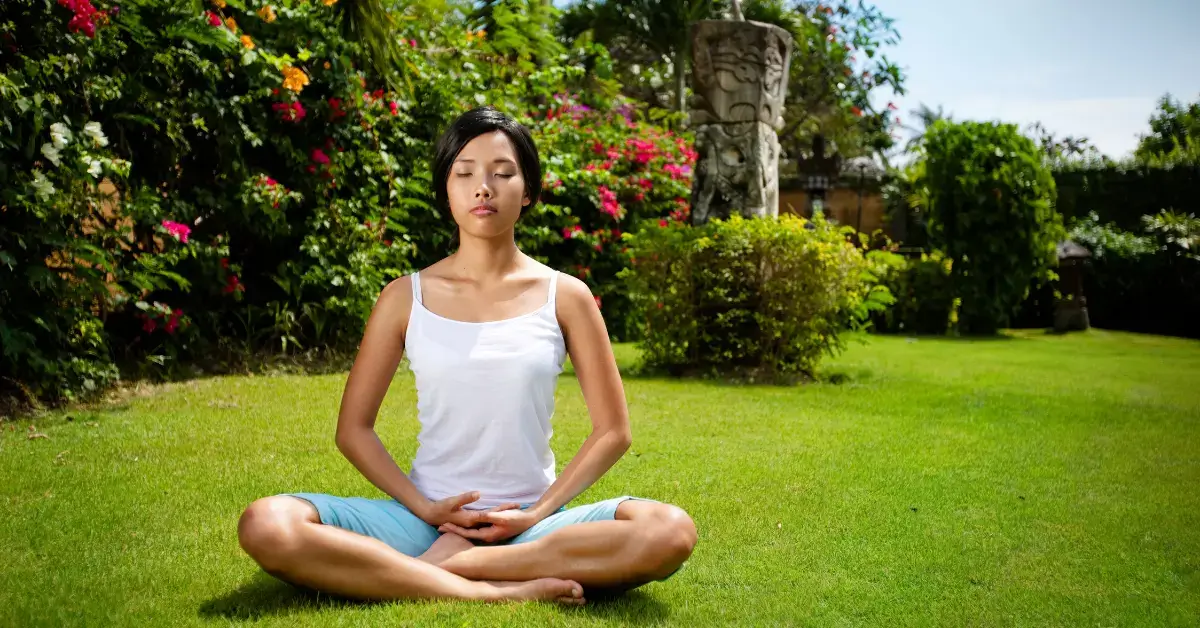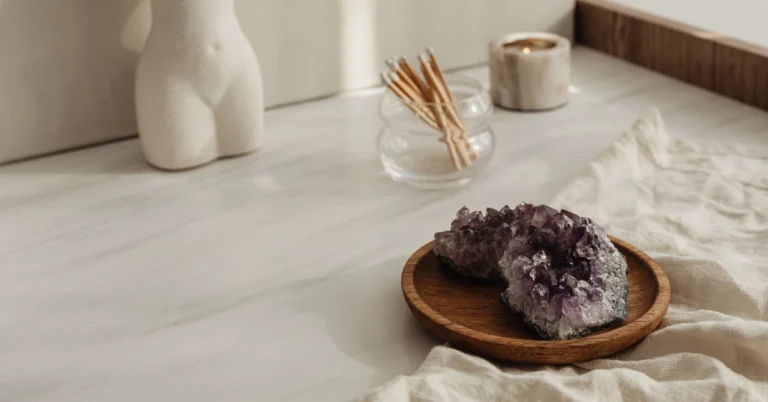Meditative gardens provide a peaceful sanctuary for reflection, relaxation, and restoration. In today’s fast-paced world, we often find ourselves craving a retreat from the noise and clutter of daily routines. Creating a meditative garden allows us to escape the chaos and connect with nature, offering a tranquil space to unwind and contemplate.
Incorporating elements such as soothing water features, winding pathways, and calming plants, we can design our meditative garden to enhance our well-being. By dedicating a sacred space in our outdoor area for such gardens, we cater to our need for serenity and balance, as well as improve our mental and emotional health.
As we explore the various ideas and designs for meditative gardens, let’s remember that these intimate spaces are meant to be tailored to our personal preferences, resonating with the natural surroundings that captivate and inspire us the most. Together, we will create the perfect meditative oasis that fosters inner peace and offers refuge from the demands of everyday life.
I love this Yoga mat 🧘🏼♀️
✅ Anti-Slip Surface ✅ Effortless Cleaning
✅ Conscious & Safe Materials
Types of Meditation Gardens
We’re excited to share some great ideas for creating your own meditative garden. These serene spaces can help provide a calm environment for contemplation, relaxation, and mindfulness, whether they’re in your backyard, at your office, or even indoors. Here, we’ll explore a variety of meditation garden types to inspire you on your journey to create a peaceful oasis of your own.
One popular type of meditation garden is the Japanese Zen garden. These gardens are typically minimalist and make use of carefully selected natural elements such as rocks, sand, and plants to convey a sense of peace and tranquility. The sand is often raked into intricate designs, representing water, while the rocks symbolize mountains or islands. An outdoor space with a Japanese Zen garden can serve as a serene setting for meditation and reflection.
Another type of meditative garden is the rock garden. Similar to the Zen garden, rock gardens use stones, boulders, and gravel in different sizes and shapes to create an aesthetically pleasing and calming environment. The careful arrangement of rocks can encourage mindfulness, as you take in their natural beauty and simplicity. Rock gardens can be found both outdoors and indoors, making them a versatile option for any space.
Cloister gardens are another beautiful meditation garden option. Traditionally found in the center of monasteries, these gardens are characterized by their enclosed, courtyard-like designs. Often surrounded by arched walkways, cloister gardens might include lush greenery, flowers, and even water features, providing a quiet sanctuary for contemplation and reflection.
For those with limited outdoor space, consider creating an indoor meditation garden. Utilizing houseplants, soothing colors, and calming décor elements, you can transform a corner of your home or office into a refreshing and peaceful retreat. Indoor gardens can help to improve air quality and bring a touch of nature indoors.
Finally, the backyard meditation garden is an excellent option for those who want to create a peaceful space right outside their home. With a well-designed backyard garden, you can enjoy the benefits of relaxing in a meditation garden that’s easily accessible and personalized to your tastes. By incorporating water features, privacy-enhancing plants, and comfortable seating, a backyard meditation garden can become your favorite spot to unwind.
We hope these meditation garden types have inspired you as you embark upon your journey to create a soothing space for mindfulness and relaxation.
Understanding Meditation Gardens

Meditative gardens are spaces that we create to help facilitate mindfulness, inner peace, and a deep connection with nature. These gardens are designed with intention, using natural elements to promote a calm and soothing atmosphere. Let’s explore the various aspects of a meditation garden, including its benefits for our mental and emotional well-being.
Design plays a crucial role in a meditation garden. The goal is to create an environment that encourages introspection and tranquility. Elements such as water features, boulders, and lanterns are often used to represent larger natural forces and evoke a sense of peace. A well-designed meditation garden invites us to pause, reflect, and immerse ourselves in nature’s beauty.
Meditation gardens offer a range of benefits to those who spend time in them. Being in nature has been shown to lessen stress, anxiety, and even depression, making these gardens particularly useful for those living in densely populated cities. By incorporating plants, our minds are subconsciously eased, allowing us to focus and experience the many proven therapeutic benefits of plants.
Nature is at the heart of a meditation garden, and these spaces provide an opportunity to connect with ourselves and the world around us. Fostering a sense of wonder and joy, meditation gardens serve as an island of tranquility in our otherwise hectic lives. They help us cultivate inner peace and hope amid a sea of turbulence.
Incorporating meditation gardens into our daily lives can have a profound impact on our overall health. By creating a space dedicated to mindfulness and relaxation, we are better equipped to manage stress and live a more balanced, peaceful life. As we nurture our gardens, we also nurture our minds, bodies, and spirits, making meditation gardens an invaluable addition to our lives.
Choosing the Right Space for a Meditative Garden
With the fast-paced modern world we live in, it’s no surprise that many of us are seeking refuge in our own meditative gardens. Creating a peaceful space where we can find solace and practice mindfulness can make all the difference in our daily lives. In this section, we’ll guide you through selecting the perfect location to establish your meditative garden.
The first aspect to consider is the available space. A meditative garden doesn’t necessarily have to be large; it can be designed suited to your own unique space requirements, whether it’s in a small corner of your backyard, your office, a sunroom, or even on a balcony. The key is to find a space where you feel comfortable, free from distractions and noises.
Next, think about the specific location. Outdoor meditative gardens are ideal, as they allow you to connect with nature, benefit from natural sunlight, and enjoy the tranquility of your surroundings. If an outdoor garden isn’t feasible, you can create a serene sanctuary indoors. Placing an indoor meditative garden near a window, in a sunroom, or on a patio is ideal for capturing sunlight and staying connected with the outdoors.
If your available space is limited to a desk or office area, consider incorporating elements of a meditative garden into your workspace. Small decorations, plants, and calming objects can help you create a mini oasis within the busyness of your everyday life. A well-designed pocket garden on a deck or balcony can also provide a place for reflection and relaxation.
When designing the layout of your meditative garden, be mindful of the space’s size and potential. Don’t overcrowd the area with too many elements. Instead, focus on creating a harmonious yet functional space. Incorporating different textures, colors, and foliage can create rich, multi-layered feelings in smaller areas. Finally, regardless of where your meditative garden is situated, ensure that it feels like a sanctuary and captures the essence of relaxation and mindfulness.
Essential Elements of a Meditative Garden
A meditative garden is a wonderful place to find peace and tranquility as you immerse yourself in nature. There are certain elements that you can incorporate into your garden to create a serene and relaxing atmosphere. Here, we’ll talk about the essential elements of a meditative garden that can enhance your outdoor sanctuary.
A well-designed path is important, guiding you through the garden and helping to set the tone for your experience. Consider using materials such as natural stone, pebbles, or even wood to create a sense of harmony with the surroundings. The path should meander gently, leading to different areas in the garden where you can pause and reflect.
Water is another essential element that adds a soothing vibe to your meditative garden. It could be a small pond, a fountain, or even a simple water feature made of metal or concrete. The sound of flowing water helps to create a calming atmosphere, allowing you to focus and truly enjoy the beauty of nature.
Choosing the right plants and color scheme can also make a big difference in your meditative garden. Opt for flowers, shrubs, and vines that provide various shades of green and other calming colors. Treescan offer shade and a sense of enclosure, while their leaves rustle gently in the wind. Consider including fragrant flowers and herbs to stimulate your sense of smell and further enhance the ambiance.
A balance of different textures and materials in your meditative garden can be visually pleasing and grounding. Including elements such as rocks, walls, and sculpture can add both a visual and tactile dimension to your garden. Meanwhile, soft soil and the rustling of leaves or wind chimes can bring a sense of calm and comfort as you move through the space.
Lastly, don’t forget about seating in your meditative garden! Benches and other seating areas allow you to take a break, relax, and truly enjoy the peaceful setting you’ve created. Whether you opt for a simple wooden bench, a cozy gazebo, or even potted plants arranged to form a small, private nook, the key is to provide comfortable spots where you can sit and let the stresses of everyday life fade away.
By incorporating these essential elements into your meditative garden, we believe you’ll be able to create a truly enchanting space where you can relax, rejuvenate, and reconnect with yourself and nature.
Creating a Sense of Peace and Tranquility

In today’s fast-paced world, finding moments of calm and tranquility is more important than ever. A perfect way to achieve this balance is by creating a meditative garden. This outdoor space serves as an oasis, allowing us to connect with nature and ourselves. Let’s explore some key elements for fostering a sense of peace, joy, wonder, inspiration, and flow in our meditative garden.
First and foremost, we need to select an ideal location for our garden, which should be relatively quiet and comfortable, away from distractions . Consider using walls, fences, doors, gates, and ceilings to create a sense of enclosure and privacy. This separation from the rest of the home or yard helps us to fully immerse ourselves in the experience.
Nature should be at the heart of our meditative garden. Incorporating various plants, trees, and flowers can help us feel a deeper connection to the Earth, evoking a sense of wonder and inspiration. Choosing a variety of foliage with different colors, textures, and shapes can add to the visual appeal and overall ambiance.
The sound of flowing water can be a soothing addition to our garden, creating a sense of calm and tranquility. Consider incorporating a water feature, such as a fountain, pond, or stream, to provide gentle background noise and connect us to the element of motion.
To enhance our overall sense of peace and relaxation, it’s essential to include comfortable seating, hidden amidst lush greenery or placed near the water feature. When selecting seating, ensure it complements the garden’s aesthetic and provides a spot for us to sit, breathe, and soak in the serene atmosphere.
In conclusion, by incorporating these essential elements, we can create a meditative garden that promotes a sense of calm, peace, tranquility, joy, wonder, inspiration, and connection to nature. Our garden will become our personal sanctuary where we can escape the chaos of daily life and nurture our inner peace.
Designing Meditation Gardens for Different Settings
Creating a meditative garden can be a wonderful way to cultivate mindfulness and tranquility, no matter the location or setting. In this section, we’ll explore various ideas and elements to consider when designing different types of meditation gardens, both indoor and outdoor.
Outdoor Meditation Gardens
Outdoor meditation gardens come in a variety of styles, but some popular designs include the Japanese garden, zen rock garden, labyrinth, and cloister garden. These garden styles often incorporate elements such as water features, meandering paths, and carefully selected plants to create a serene atmosphere. Many outdoor meditation gardens also include curving lines, which can evoke a sense of fluidity and calmness when navigating the garden landscape.
A Japanese garden typically consists of carefully designed rock formations, manicured plants, and tranquil ponds. These gardens offer a serene and harmonious environment perfect for contemplation. The zen rock garden, on the other hand, features meticulously arranged rocks, together with a carefully raked gravel or sand to represent the rippling water.
Labyrinths and cloister gardens provide spaces for walking meditation. A labyrinth is a single, winding path that leads to a center point, offering a meditative journey inward and outward. A cloister garden, usually found in monastic settings, often features a central courtyard surrounded by covered walkways, creating a peaceful and enclosed space with lush plantings.
Indoor Meditation Gardens
For those with limited outdoor space or a desire to create a tranquil getaway within their home, designing an indoor meditation garden can be an excellent option. Indoor meditation gardens can be created in any room, such as a sunroom, a spare bedroom, or even a dedicated corner of your living space.
When designing an indoor meditation garden, consider incorporating elements traditionally found in outdoor gardens, such as plants, water features, and zen rock gardens, but on a smaller, indoor scale. If space is limited, create a miniature rock garden with sand or gravel in a shallow tray or container. Adding potted plants can also bring a touch of nature indoors, allowing you to connect with the natural world while practicing garden meditation.
Lastly, the ambiance is crucial for creating a meditative atmosphere in your indoor garden. Use soft, dim lighting, natural materials, and calming colors to create a sanctuary that is conducive to relaxation and mindfulness.
Adding Personal Touches to Your Meditative Garden

Creating a meditative garden is not just about following a set of rules or design principles. It’s an opportunity to express ourselves and incorporate elements that hold personal meaning. In this section, we’ll explore how to add a personal touch to our meditative gardens by incorporating decor, statues, native plants, and more.
One way to personalize our meditative gardens is through the inclusion of meaningful decorations. This can come in the form of statues representing figures from our faith or spiritual practice, elements from a favorite prayer, or other symbolic items. These additions not only add visual interest to the garden but also serve as reminders of our intentions and beliefs.
Native plants can also play a role in customizing our gardens. By incorporating plants native to our region, we not only support local ecosystems but also create a space that feels more connected to our surroundings. Holly and berry bushes, for instance, can provide vibrant pops of color and serve as a haven for local wildlife, while also giving the garden an authentic, natural feel.
Water features like a garden waterfall can add an element of tranquility, amplifying the peacefulness of the space. The natural sound of flowing water can help us relax and reduce stress, making it a perfect addition to our meditative gardens. We can further enhance this effect by positioning a comfortable garden bench near the waterfall, so we can sit and enjoy its soothing sounds.
Lastly, the seeds we choose to plant in our meditative gardens can have personal significance as well. If certain plants or flowers hold a special meaning for us—perhaps they remind us of a loved one or carry a specific symbolism—their presence in our gardens can make the space feel even more unique and personal.
By thoughtfully incorporating decor, native plants, water features, and meaningful seeds into our meditative gardens, we create a space that truly reflects our inner selves and enhances our meditative experience.
FAQ
What is a meditative garden?
A meditative garden is a specially designed space that promotes relaxation, reflection, and mindfulness. It is a haven where individuals can retreat to immerse themselves in nature, disconnect from daily stressors, and focus on personal introspection.
What should be in a meditation garden?
A meditation garden typically includes elements like flowing water features, aromatic plants, serene pathways, comfortable seating areas, and often, a central focal point such as a statue or sculpture. The design prioritizes harmony, tranquility, and a connection to nature.
Is a Zen garden the same as a meditation garden?
While both Zen and meditation gardens aim to provide a peaceful environment for reflection, they have distinct characteristics. A Zen garden, often associated with Japanese culture, uses rocks, sand, and minimal vegetation, designed to be contemplated and rearranged. In contrast, a meditative garden may have more diverse plant life and natural elements but keeps the primary goal of providing a tranquil space for meditation.
After exploring the serene depths of the meditative garden, we’d love to hear your thoughts and experiences. Share your insights with us in the comments below!







